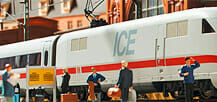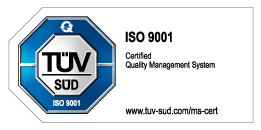Electric Freight Locomotive.
Prototype: German Railroad, Inc. (DB AG), DB Cargo, class 152.
Most Important Facts
| Article No. | 39350 |
|---|---|
| Gauge / Design type | H0 / 1:87 |
| Era | V |
| Kind | Electric Locomotives |
Check with your local dealer Find Dealer
Highlights
- Metal frame and body.
- Close couplers with guide mechanism.
- C-Sine motor.
- Maintenance-free LEDs for headlights.
- Dual long distance headlights.
- Sound effects module for air horn.
- With slow speed range for switching.
-
Product description
Model: With digital decoder and C-Sine motor. 2 axles powered.
4 traction tires. Engineer's cabs with interior detailing. Separately applied grab irons. Separately applied snow plows. Reproduction of the outboard mounted brake disks. Built-in long distance headlights and sound effects module for an air horn. Headlights digitally controlled. Dual long distance headlights, that change over
with the direction of travel, air horn, and slow speed range for switching can be turned on with the 6021 Control Unit. The
headlights will work in conventional operation. Length over buffers 22.5 cm / 8-7/8*.
In digital operation the slow speed control for switching can be activated with the "f4" function button on the 6021 Control Unit. When this is done the values set for the acceleration and braking
delay are temporarily overridden. The maximum speed is reduced considerably at the same time. Despite this the full control range is still available with all of the speed levels for controlling the locomotive. This makes it possible to have very precise switching operations.Find more Märklin explanation videos on our YouTube Channel
Spare parts for our articles can be found here in our spare parts search.
-
Publications
- Product programme 2000 / 2001 - Product programme 2001 / 2002 - Product programme 2003/2004
-
Prototype information
These units were ordered as early as 1995 in order to meet the demand for powerful freight locomotives on the German Railroad, Inc. Siemens and Krauss-Maffei developed the EuroSprinter family of locomotives further and presented the new class 152. Compared to the EuroSprinter further improvements were made to both the electrical equipment and the environmentally friendly qualities for these units. Since these locomotives are limited to hauling freight trains, a maximum speed of 140 km/h or 88 mph is quite sufficient. The continuous rating of 6.4 megawatts or approximately 8,582 horsepower in conjunction with a locomotive weight of 86 metric tons and single axle steering results in a massive starting tractive effort of 300 kiloNewtons or 67,440 pounds.









